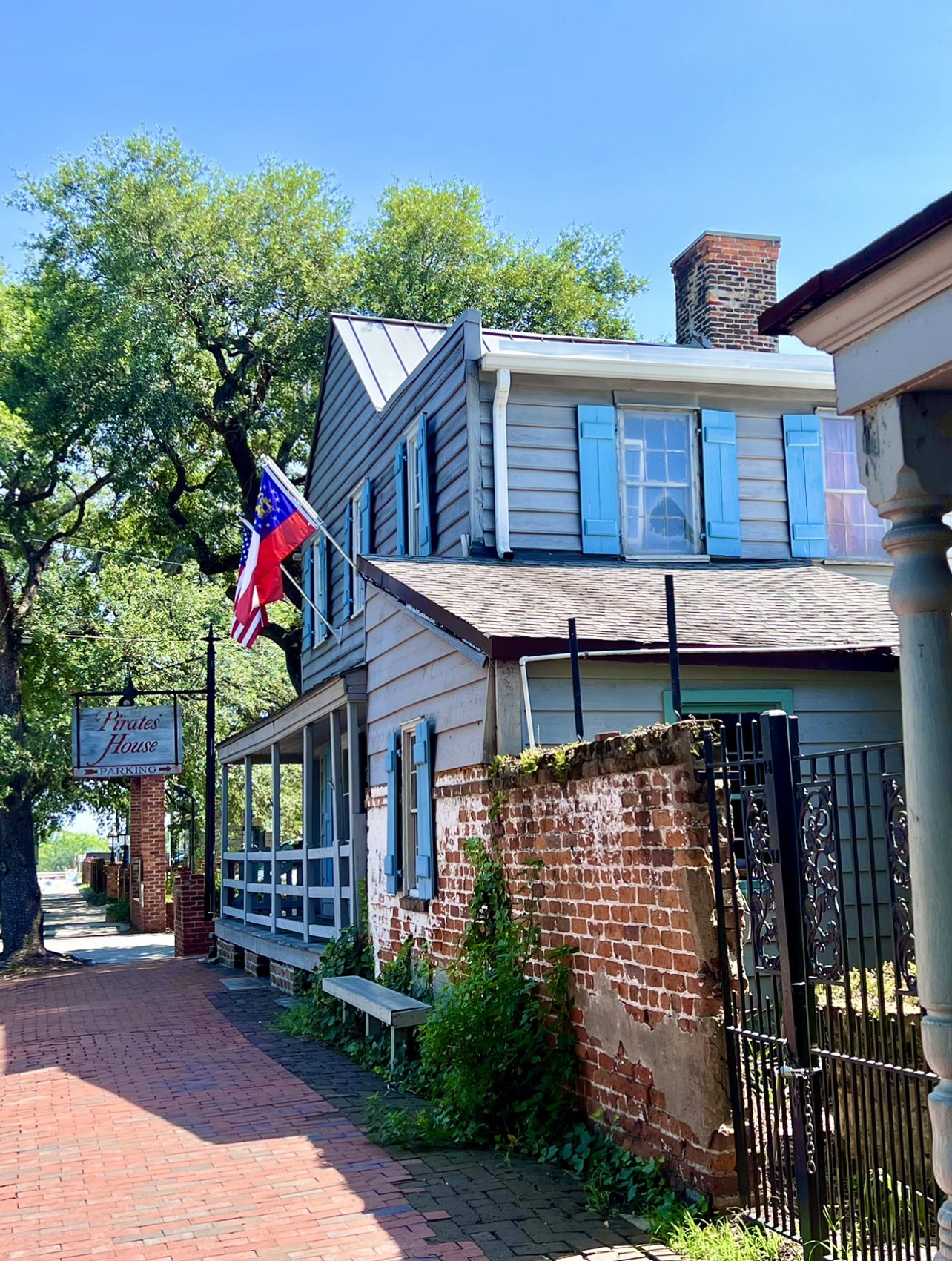Savannah's Pirate House
Today, The Pirates’ House is a beloved restaurant and bar that welcomes families from all over the world. It is upheld by traditions of owners passed, and fills guests up with the warmth of genuine Southern hospitality and a great meal. As one of the oldest buildings in Savannah, it sets the tone of the famous historical charm that is adored by many in the city today. The Pirates’ house sits on a plot of land so potent and rich with Savannah history, it is considered one of the building blocks of Georgia herself.
Upon arriving in Savannah, our founder James Edward Oglethorpe set aside 10 acres of land to be used as an experimental garden to determine the best crop for the economy of Yamacraw Bluff. Just four months later, this land became the Trustees Garden. Designed after the Chelsea Botanical Garden in London, botanists brought knowledge from all corners of the world to fill the Trustees Garden with a plethora of different crops.
At the time, the economy for wine and silk was booming, so the botanists in Savannah set forth their best effort into raising grapevines and mulberry trees. Before long, it became apparent that the blistering heat and heavy humidity of the Georgia coast was unaccommodating to the vines and saplings, so the botanists focused elsewhere. They realized that peaches thrived in the garden, as well as cotton. These crops would become a fortuitous staple of the early South.
The first building on the Trustees Garden acreage was the Herb House. It was built around 1853 to house the head gardener. The front of the house is where the gardening tools were kept, the back housed the stables, and the gardener himself slept in the hayloft on the second floor. Meanwhile, the city of Savannah had grown into a thriving, lively seaport town. As more people moved to the city, the Trustees Garden shrank back to make room for a larger residential district.
By 1945, the Savannah Gas Company had purchased the 10 acres of the former garden, as well as the Herb House. The land and the homes nestled throughout were marked for demolition. Luckily, a determined woman by the name of Mary Hillyer, the wife of SGC’s president Hansell Hillyer, saw the rich history and future potential for the acreage. She coordinated with the SGC Board of Directors to allow her a license to renovate the Herb House and the land surrounding it. She recruited a group of like-minded and equally determined women, and they set out to revive the homes and Herb House.
Seven years later, the project was finished! The newly renovated Pirates’ House caught the attention of visionary and local leader Herbert Traub Jr. And his business partner James T. Casey. The Pirates’ House was opened as a tearoom by Traub and Casey in 1953 and quickly became popular amongst locals and visitors alike. It was so beloved and busy that Mr. Traub and Mr. Casey cultivated 23 dining rooms just to meet demand!
The liveliness of the Pirates’ House didn’t end there, however. In 1990, the upper level of the House became a jumping jazz club called Hannah’s East. Run by Herbie Mann, the famous composer of “Comin’ Home, Baby!” and Emma Kelly, an accomplished pianist from Statesboro; it’s no surprise that word of the Pirates’ House caught like wildfire. When Emma Kelly became known as “The Lady of 6000 Songs” for her prominent role in Midnight in the Garden of Good and Evil, people from all over the world came to the Pirates’ House to hear her play. Clint Eastwood himself even sat by her piano to hear her talent in person.
Today, a homey gift shop stands in the place of the once vibrant jazz club, and the tearoom has become a charming Southern-style restaurant that fills the stomach with warmth, and pulls the heart back to the simplistic traditions of old Savannah. One feels a sense of belonging and home upon entering The Pirates’ House, and it’s easy to see how such a wonderful city grew from 10 acres of land and a modest garden home.
